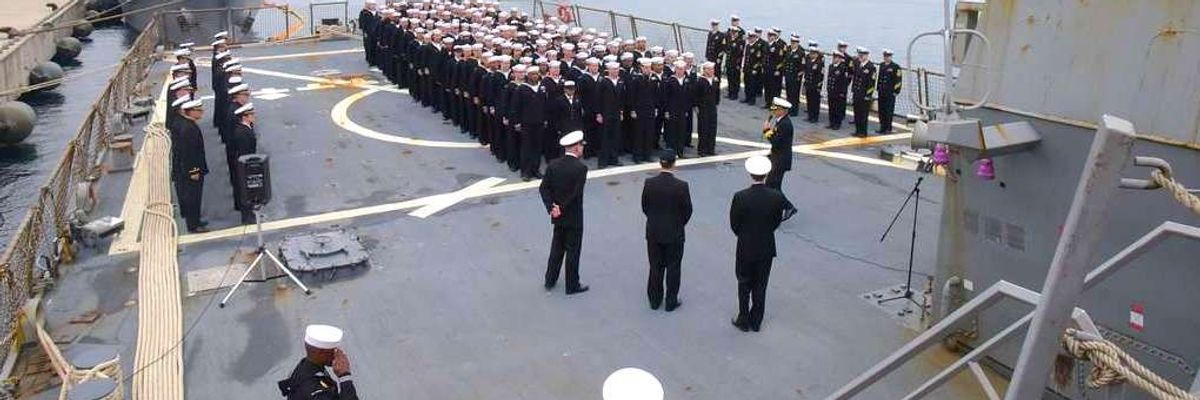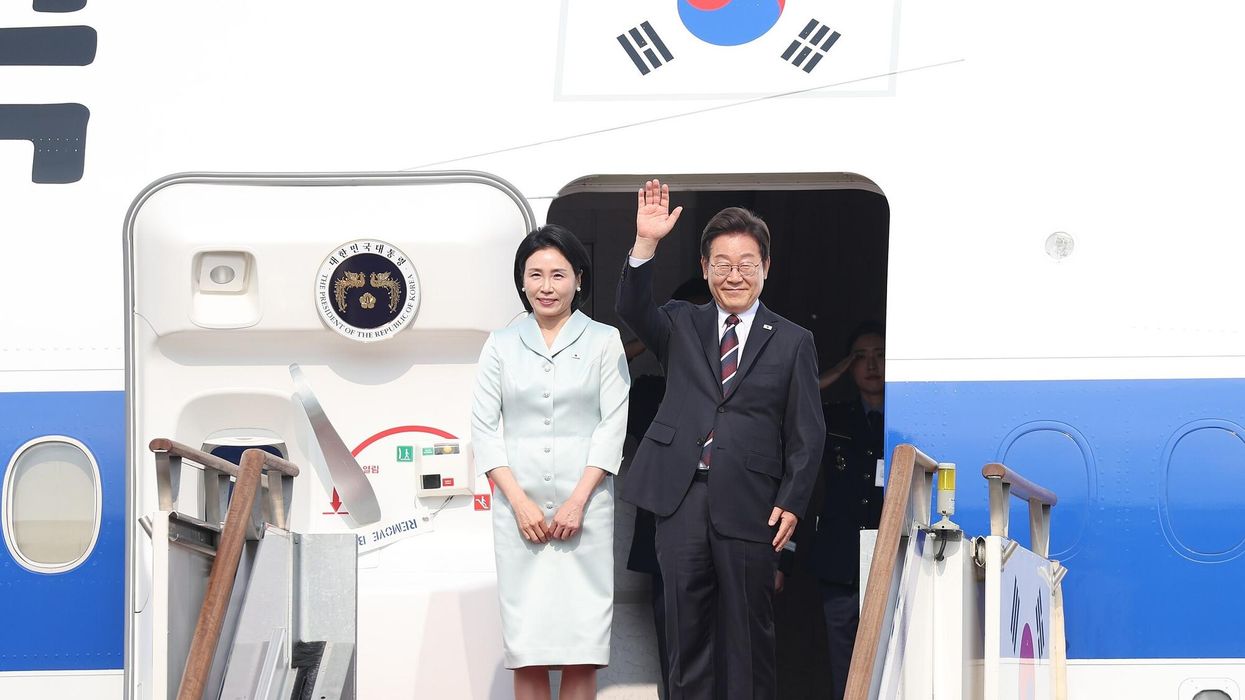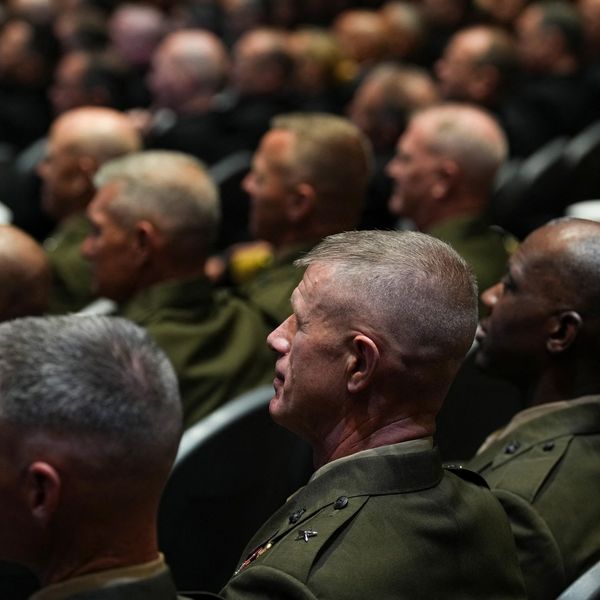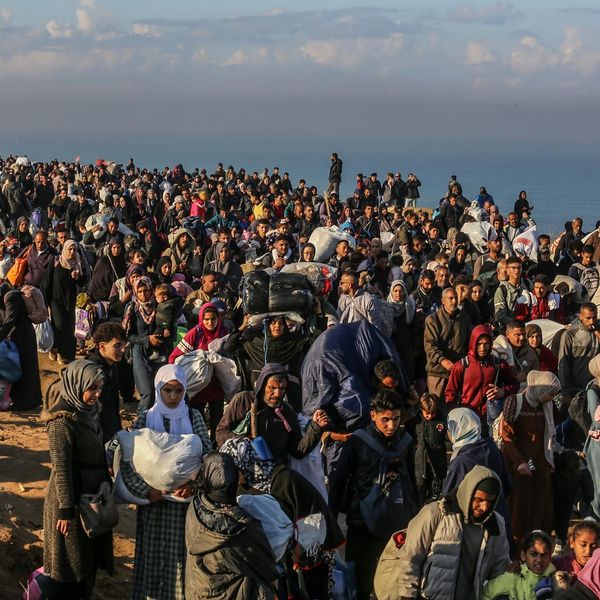This article is part of our weeklong series commemorating the 70th Anniversary of the Korean War armistice, July 27, 1953.
Throughout the Biden administration, the United States has boosted defense cooperation with South Korea. It has developed South Korean cooperation with the U.S.-Japan alliance on intelligence sharing and coordinated U.S.-South Korea-Japan military responses to North Korean missile tests. The United States has also expanded its military presence in South Korea, by increasing the size of joint alliance military exercises and significantly enhancing the visibility of U.S. strategic assets around Korea. U.S. ICBM submarines now call at South Korean ports.
The Biden administration argues that expanding the U.S. deterrence posture on the Korean Peninsula reflects a defensive response to North Korea’s nuclear and missile programs and its resistance to negotiations. The United States, it argues, must bolster deterrence of North Korean use of force. But contrary to such U.S. declarations, expanding U.S.-South Korea military cooperation and the U.S. military presence on the Korean Peninsula is not necessary to deter North Korean hostilities. Instead, it is to a great extent driven by the purpose of containing China.
At the conventional level, South Korea’s air, naval, ground force, missile, and space capabilities have advanced significantly, so that it now possesses overwhelming military superiority over North Korea in every dimension of the conventional balance and in warfighting capability. Regarding nuclear deterrence, despite North Korea’s missile program, U.S. capability and credibility to retaliate against North Korean use of nuclear weapons remain as robust as ever, so the U.S. deterrence posture remains as effective as ever.
Under the previous Moon Jae-in administration, South Korea pursued political and economic cooperation with North Korea and China and constrained its defense cooperation with the United States. Yet, North Korea remained effectively deterred. The United States has long understood that neither North Korean conventional forces nor its nuclear weapons pose a significant threat of war on the peninsula, absent a North Korean leadership crisis and extreme political instability. And after nearly 30 years of trying to turn back North Korea's nuclear program, it is clear that neither U.S. coercion nor U.S.-South Korea military cooperation will compel Pyongyang to give up its nuclear program.
Thus, U.S. policy on the Korean Peninsula must be understood in the context of the rise of China and its challenge to Washington’s post-World War II security partnerships in East Asia. To resist the implications of China’s rise for U.S. regional dominance in East Asia, Washington has expanded cooperation with countries all along China’s perimeter. South Korea is no exception to this U.S. push.
The Trump administration began bolstering military and diplomatic cooperation with Taiwan, and the Biden administration has strengthened this policy. But the Pentagon acknowledges that China lacks the ability to invade Taiwan and will not have that capability until perhaps 2027. China remains self-deterred from attacking Taiwan, but the United States regardless seeks to double down on Taiwan deterrence.
With the Philippines, the United States throughout the Biden administration has boosted defense cooperation to resist Chinese coercion. But from 2016-2021, during the Duterte administration, tension over the China-Philippine maritime conflict subsided, and Philippine fishing boats operated in Chinese-claimed waters.
Similarly, U.S. policy toward the Korean Peninsula is one element of the U.S. effort to contain Beijing’s rise through the encirclement of China’s coastal perimeter. The U.S. deployment of Terminal High Altitude Area Defense (THAAD) in 2016 was not for the defense of South Korea; THAAD is ineffective against North Korean missiles. Because of the proximity of North Korean missiles to South Korean territory and the short launch to target time, THAAD cannot defend the northern two-thirds of South Korean territory.
Rather, the deployment of THAAD aimed to consolidate U.S.-South Korean alliance cooperation as China’s rise challenged the U.S. presence on the Korean Peninsula. Moreover, by equipping the THAAD system with the long-range AN/TPY-2 X-band radar system, rather than the Pine Tree system that could adequately cover North Korean airspace without reaching China, the United States expanded its surveillance of Chinese missile launches, thus strengthening U.S. missile defense vis-a-vis China.
But U.S. policy on the Korean Peninsula cannot impose sufficient costs on Beijing’s security to alter the rise of China. U.S. policy affects neither the balance of power in East Asia nor the long-term pressure on South Korea to adjust to China’s rise. South Korea’s vulnerability to the Chinese Army and to Chinese naval dominance on its maritime border in the Yellow Sea is an enduring feature of South Korea's security environment, regardless of U.S. policy. And South Korean vulnerability to its dependence on the Chinese economy will similarly endure.
Whereas the U.S. effort to contain China on the Korean Peninsula will not alter the rise of China nor its challenge to the peninsular balance of power, it is costly to both the United States and South Korea. Up-tempo U.S.-South Korean military exercises raise North Korean threat perception of a U.S. attack on its leadership and contribute to crisis instability, heightening the risk of unintended hostilities.
The U.S. containment policy also raises the risk of heightened conflict with China on the peninsula, as greater South Korean cooperation with the United States creates incentives for China to challenge South Korea with coercive diplomacy, with consequences for U.S.-China conflict.
Furthermore, the U.S. containment policy undermines the important U.S. objectives to develop a dialogue with North Korea to discuss its nuclear and missile programs and to stabilize the peninsula. U.S.-South Korea cooperation on the containment of China would strengthen Beijing’s interest in tolerating North Korea’s resistance to dialogue, its nuclear program, and its hostility and threats toward the United States and South Korea. Heightened North Korean hostility would be the cost that China imposes on U.S.-South Korea containment cooperation. Indeed, China has become increasingly uncooperative with United Nations sanctions on North Korea as its hostility toward U.S. containment has grown in recent years.
Rather than try to contain the rise of China on the Korean Peninsula with an unnecessary, ineffective, and destabilizing expansion of its military presence and operations in South Korea and greater U.S.-South Korea military cooperation, the United States should seek expanded dialogue with China over cooperation for peninsular stability. But this will require the United States to forsake its counterproductive and costly containment policy in the interest of peace and stability.
















